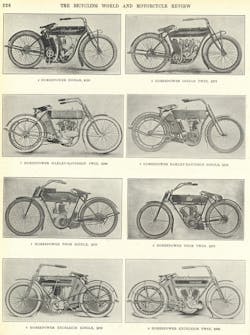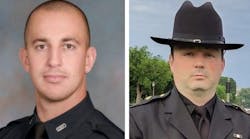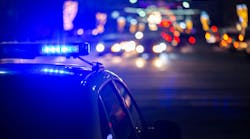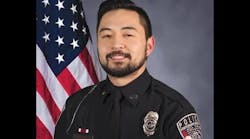Motorcycle units, or “motors” as they are known, have been around just about as long as motorcycles. Departments all around the world quickly realized the benefits of motorcycles in policing, in fact some departments have units that have been in operation for more than 100 years.
The use of motorcycles by police, however, is in a state of constant change. Just because Department A has a motor unit doesn’t mean that their duties, responsibilities and operational procedures are the same as Department B. while one department may use motors strictly for traffic control and VIP escorts, another uses fast sports bikes for high speed highway enforcement, while still another uses police bikes outfitted with weaponry for tactical work.
By all accounts, the use of motorcycles in US policing is on the upswing as departments across the country re-discover the benefits of motor units.
Tactics: Traffic and speed enforcement
“The motorcycle for law enforcement is a fickle beast,” Jeff Capps, president and owner, Motor One, admits. “There are a lot of departments that don’t understand what a motorcycle unit can do. Many departments think that you can only ride a few months out of the year and that’s just not true. You can ride year-round as long as there isn’t ice on the ground.
“If you can give me five or six guys and put them on motors, the impact you can have on traffic is unbelievable,” he continues. “Traffic is one of the biggest benefits. Safety is the biggest thing: inattentive driving, lane changing without signaling. If you are sitting in a traffic jam in a patrol car and see something, it’s hard to get to the offender. On a motorcycle, you can lane split to them and pull them over. You can have an immediate effect. You can event pull over on the shoulder or on the sidewalk and observe traffic.”
Some departments, like the Oklahoma State Police, put their troopers on Suzuki Hayabusas, one of the fastest production motorcycles in the world, in order to do high speed traffic stops.
“We currently have two 2006 Hayabusas outfitted with Corbin bags and smuggler, Stalker moving radar, red and blue emergency lights and sirens, all paid for by drug asset forfeiture money,” says Clint Riddle, Hayabusa Motorcycle Enforcement Trooper, Oklahoma State Police. “The Captain and I also attended Keith Code California Superbike School for additional training. The Hayabusas have been and still are a great PR tool for us in every aspect imaginable and has also helped other agencies. I have had motor officers tell me that sport bike riders that would run from them now don't dare. The greatest thing is that they allow us to make contact and have conversations with the sport bike community, which gives us the foot in the door to visit about safety.”
The Baton Rouge, LA motor unit, which has been in place since 1923, has seen an increase in aggressive behavior towards its officers in recent years. “10 years ago, violators fled the scene to avoid contact with or apprehension by law enforcement,” says Sgt. David Wallace from Baton Rouge PD. “Today, we are seeing a growing trend of active aggression towards police. Motorcycle officers are 100 percent exposed and are the most vulnerable of any division in a police department. Motor officers do not only need to be concerned with our riding ability (accident avoidance, hazard recognition, etc.) but we must be concerned with defending gunfire and using our equipment to the best advantage. Each motor officer must attend and successfully complete our Motor Survival Class. This class teaches officers to use their motorcycle as cover and concealment, and to accurately return gunfire to eliminate any threats.”
Escort/parade
When you have dignitaries come in, the motor unit can do the escorts themselves. Many departments have started motor units for traffic and developed them into units for escorts as well.
"Motors also allow our agency to conduct dignitary escorts in a very effective, efficient and safe manner, with far less personnel than what would otherwise be required,” says Deputy Randy Wiessinger, Dane County (Wisconsin) Sheriff's Office, Traffic Team/Motor Unit/Honor Guard. “Our particular escort method is based on the same technique used in Washington DC by the US Park Police in that we are able to conduct an effective, safe and efficient escort with six to eight motors. Many motor units use a different technique that requires a great deal more motors, but still less personnel than if the same escort was done without motors.”
Community policing
A motorcycle is very visible, much more so than a patrol car. Some departments just ride their motors into troubled areas and have them sit out in the open.
“You can ride a patrol car through a community and it will be ignored. Ride a motor unit in there and they will notice,” says Motor One’s Capps. “People pay attention to it. Motorcycles and motor officers are much more approachable, and you can really have an impact on the community.
“Young children gravitate towards horse officers and motor officers,” he says. “I would set up near the White House and kids would come up and I’d sit them on the bike and give them stickers, and their parents would ask me questions. It’s a way to get people to interact. If you do this in a community that has issues, you will start to hear about what is happening in the neighborhood. 50 years ago the cops had a few block area and would walk it every day, we have gotten away from this, but we can do the same with motor units.”
Tactical duty
Some departments are putting their motor units to work on tactical missions, like clearing out drug neighborhoods and more.
“We currently use BMWs that have ABS and Traction Control,” says Oklahoma State Police’s Riddle. “We can use these motorcycles in more tactical uses in alleys and passages where vehicles can't go, since the BMW motorcycles are quieter.
“Motors are still a very effective tool,” he says. “It has helped me to respond to accidents where the interstate system is shut down. I have used my motorcycle to get through traffic to the scene or to help clear a path for ambulances. It also allows us to work high traffic areas and stop the aggressive drivers. With the motorcycle's ability to split lanes and such, cars are not able to be effective and take a proactive approach like we are. College football is a huge attraction here and motorcycles are used to clear roadways and provide escorts. Just recently we had large tornados devastate the Oklahoma City area and motor units were used to escort emergency units and equipment into the hardest hit areas.”
The evolution of motors: Training
Motor unit training is an area that has really developed in recent times. It's not enough to give officers motorcycles to ride. They have to be trained in a law enforcement-specific way.
“Ten years ago, we had no special tactical training for motor officers, and today we do,” says Dane County Sheriff's Office’s Wiessinger. “We have now developed a mentality that recognizes motors are unique, and therefore require unique approaches to training, and require training dedicated just for motor officers, much the same as dedicated specialized training for SWAT and EOD. However, this mindset has taken a great deal of effort and time to develop and requires constant attention.
“Traffic enforcement is our primary responsibility, with additional duties for all escorts, and numerous special assignments,” he says. “There is nothing more important than training for a motor unit. Without it, a motor unit is nothing more than a time bomb, waiting for the mishap or accident that will end the motor unit’s future, and even more tragically kill or severely injure the motor officer. I unequivocally believe that training saves lives or motor officers. It also saves motor units, and mitigates liability for the agency. To the individual motor officer, training allows him/her to not only stay safe, but to operate their motor in an effective manner and perform their duties at a much higher level of professionalism and confidence. As a motor unit, training allows multiple motor officers to work together safely and effectively. Motor officers need to have complete confidence in the motor officer next to them, knowing that they will react/act in the same manner as they will in a split second decision moment – partner training is vital.”
The motorcycles
Harley-Davidson is the big dog in the USA, with a large percentage of the motor units riding police Harleys. BMW is second, with a smaller percentage but is gaining in popularity. These two are the major suppliers and have been making police motorcycles for quite some time, resulting in motorcycles that really work, with integrated systems specific for law enforcement.
Kawasaki used to be an active player in the police motorcycle business, but they stopped making factory police motorcycles in 2005. Their flagship sports tourer, the Concours 14, is available to retrofit as a police motorcycle.
Victory, which is owned by Polaris, has begun a police motorcycle program, and Indian, who is also owned by Polaris, has a long tradition of police motorcycles, may get back into the game.
The benefit of buying a dedicated police motorcycle from the manufacturer, rather than a retrofit, is that all the systems needed are already fitted and the bike is purpose-built for law enforcement use. And, very importantly, the bike and all the integrated gear is backed by the manufacturer’s warranty.
Frank Stevens, Sales Development Manager at BMW Motorrad USA, is seeing some changes in what departments want built into the motorcycles. "West of the Mississippi, we are selling a lot more weapons holders, electric locking mounts," he says. "With many departments, the motor unit will show up quicker, which is their key benefit, so motor officers are becoming better equipped to respond to things beyond just traffic."
In Baton Rouge, the department is adding additional equipment to increase the safety of their officers. “We are currently implementing the use of audio and video recording devices, installing additional motorcycle lights to enhance visibility, and are in the process of installing moving and stationary speed measuring devices on the motorcycles,” says Baton Route PD’s Wallace. “It is our responsibility to enhance the visibility of the officers and make every effort for them to be seen.”
The uniforms
The motor officer uniform is evolving away from the CHP look (half helmet, big leather boots, etc.)
“We are getting away from the stereotypical short sleeve shirts, half shell helmets and high boots,” says Motor One’s Webb. “That is transitioning into cargo pants, over the ankle boots, with Kevlar on the knees and hips, with Kevlar jackets. You are seeing more and more agencies going to full face or three quarter helmets. More and more agencies are going to Bluetooth systems. Once you put your helmet on, the communications are synced with their helmet already.”
These changes are not going to happen overnight, however, as law enforcement is, at its core, very traditional.
“With our uniform, the only change I would say is not using the half shell helmet, which has already saved the life of one of our motor officers who was involved in a crash and hit the lower back of the helmet into the curb,” says Oklahoma State Police’s Riddle. “Other than that, we still wear the traditional uniform that is common here. Except for the Hayabusas, where we use riding pants and jackets with armor built in. The uniform deal for me is an ongoing battle, and I hope to move it forward someday.”
Motorcycles have been in police use for more than 100 years and will be around as long as motorcycles are a viable form of transportation. Motorcycles, when used correctly, are too effective not to be utilized.



